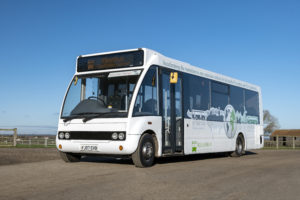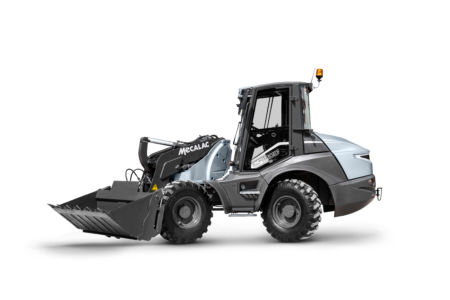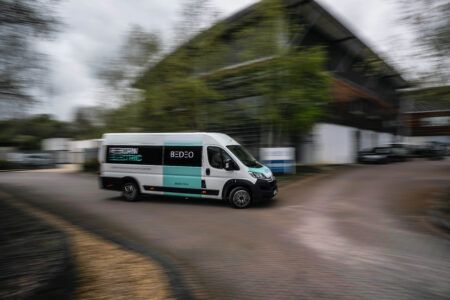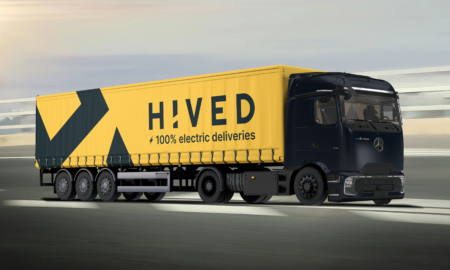With climate change escalating and poor air quality in cities reaching critical levels, decarbonising transport has become one of the greatest challenges of our time. Electrification is the most viable way for bus operators to go green, but new electric buses are expensive and can take many months to join a fleet from order placement to delivery.
There is another option though: repowering. Removing the diesel engine or hybrid powertrain from an existing bus, and replacing it with a fully electric powertrain is – the experts claim – the fastest and most cost-effective method to transition the UK bus fleet to zero emission.
UK-based Kleanbus are at the forefront of the repowering process. It’s proprietary system combines proven electric powertrain components from leading Tier 1 suppliers with its’ own integration technology and software, and it’s state-of-the-art platform technology can turn any diesel bus, whether single or double decker, zero emission.
“Ninety-seven percent of UK buses are powered by diesel engines that emit large amounts of carbon, oxides of nitrogen, and particulate matter,” says Joe Tighe, Co-Founder and CEO of Kleanbus, “And staggeringly, there are 35,000 of them on the road. Replacing these vehicles with new electric buses is very expensive for private companies and government subsidies will take many years given fleet turnover rates. Kleanbus offers a fast and efficient way towards zero-emissions, making buses cleaner, quieter, more comfortable, and more valuable assets for operators.”
Kleanbus claim they can repower an existing bus within two weeks, getting vehicles back into service as quickly as possible, and at a considerable saving. An electric repowered bus from Kleanbus costs one fifth of a new electric bus with a third of the operating costs of diesel buses. Stats like that beg the question, why isn’t every bus company seeking out Kleanbus?

Origins
Kleanbus may be based at a 9,000 sq ft facility in the east of England, but their origins are based in a very different industry, and over 3,000 miles away. “I was in the financial services industry for almost 30 years,” says Tighe, an American who has lived in the UK since 1993, “And I got to the point in my career where I just wanted to do things that were positive for humanity and the planet. I just felt this need to try and be part of the solution rather than the problem. I started looking at big users of energy in city centres, such as hospitals and manufacturing. Then I looked at transportation, and realised it was an area where I could make a material and measurable impact.
“Kleanbus started back in 2020, with the goal of making the most difference while also being a viable business opportunity. The solution to the problem brings value to the fleet operator, the local municipality, and the environment. It was a win, win, win situation.”
Kleanbus recently reached an important milestone when it announced the installation of its state-of-the-art electric platform technology into first prototype, an Optare Solo. Its’ prototype testing programme is now underway, and pilot trials with key bus fleet operators began in January 2023.
Fleets who go to Kleanbus can expect a standardized yet individualistic approach. “First of all we do a full feasibility study on each vehicle,” says Tigh, “What does it weigh, what is it designed to do, what are the gross vehicle weight limits etc, and then we have a long discussion about what the duty cycle expectations are. We also look at what the charging opportunities for the vehicle will be, for example is it going to have enroute charging, or is there any way it can take dwell-time breaks throughout the day? If not we can help develop a charging strategy alongside of electrification of their fleet. The bottom line is not to pack too many batteries on a vehicle as possible, but rather to carry the least amount and increase their efficiency.”

Once the feasibility study has been done, Kleanbus strip out the vehicle, create a computer aided design (CAD) model and then design a system that is specific to the make and model of bus.
“We’re technologically agnostic,” says Tigh, “But we do have to standardise, otherwise we won’t be able to do this stuff efficiently, which means we won’t be able to do it inexpensively.”
A subframe is designed which is then attached to the vehicle, enabling the whole drivetrain to be pre-manufactured, so that when the vehicle is delivered to Kleanbus, it can be fitted rapidly and with the minimum of engineering risk. Then each make and model goes through a full testing regime for certification.
“Our operating system and the software that we develop is the same across all the vehicles,” says Tigh. “Obviously, it’s configured for each, but we can bring in a stronger motor if it’s a much heavier vehicle or if there are loads of hills that we fit in more batteries.”
Obviously, the repowering market is only going to grow, yet Kleanbus do seem to be unique in their approach. But Tigh is clear about the advantages of their solution over the competition, such as a skateboard platform. “With that you’re basically talking about a whole new vehicle,” he says. “You have to build the coachworks on top of the skateboard. We save all the embedded carbon for the vehicle, so that’s a critical element of what we’re doing. Rather than producing an entirely new bus, all we’re making is an electric drive train. And even the drive train that we strip out we give back to the fleet operators to use in their existing diesel fleet. So if they blow an engine or if there’s a problem with a radiator or fuel system, it can be reused.”
Kleanbus takes a realistic approach to their commitments to recycling, while considering the necessity of not scrapping components that have not reached the end of their life-cycle. “When we started this journey, we took an anti-ICE stance of, ‘OK, we’re going to melt down every diesel engine out there!’ But of course that was really naïve, because if you melt down a diesel engine that still has life in it, then actually all you’re doing is making a requirement for another diesel engine to be manufactured somewhere else. So if you can bring it back into the pool and reuse it until its natural end of life, then that’s great. If you get to the point where they’re all repowered and you don’t need any diesels, then that’s perfect. That’s what we want, but we aren’t there yet.”

Paying it forward
Kleanbus’ innovations go beyond the technology it’s developed, it also has a novel approach to financing repowering. The company has established partnerships with progressive finance providers, so operators can choose several ways in which to pay for the electrification their vehicle(s), ranging from paying upfront and leasing the battery, to paying nothing upfront and leasing both the vehicle and the battery. In this way, operators can fund the cost of the repower through operating revenue, maximising the business case. This is just one of many ways Tigh sees Kleanbus leading the UK’s change to transition.
“I think we’re doing a pretty good job,” he says of the UK’s efforts. “Kleanbus has a good relationship with TfL, they’re proactive and have got some smart people working for them. Transport Scotland are doing the same and throwing a lot of money at repowering – they’ve decided that this is the direction they’re gonna go in and it’s fiscally smart, too. They can repower three or four times the number of vehicles they can buy new.”
Tigh acknowledges that new electric vehicles have their place in the transition to electrification. “We don’t discourage people buying new electric vehicles,” he says, “We think that there’s a natural replenishment rate that with new electric vehicles and that should be stuck to. There’re some great providers out there, and no shortage of new electric buses coming on the market. But if in terms of the budgetary constraints and the ability to do this quickly, repowering has an important seat at the table, for sure.”
There are limits to repowering though, and aging fleets though, may want to consider how much life their vehicles have in them before they give Kleanbus a call. “If a vehicle is 18 years old, then realistically it’s only got another five years left in it. So we would question the judgement of putting £160K worth of a kit in a vehicle that should just be replaced. So eight to 10 years old, is the point where it still makes sense to repower, but we would check out the health of the vehicle first. But even vehicles younger than that can benefit from the refit, even if the vehicle is less than a year old because – forgetting about the environmental impact for a second – it’s simply cheaper to run every day. Even if for some brand new systems system it makes financial sense to repower them.”
Despite the age limit, there is one old vehicle that Tigh would like to give a Kleanbus makeover to. “I would love to get my hands on an old Route Master,” says Tigh, “They’re classics, and funnily enough repowering one would be easier than a modern vehicle as they’re not a reliant on electronics, everything is pretty simple. I’d love to do that though, it would be a real treat.”





